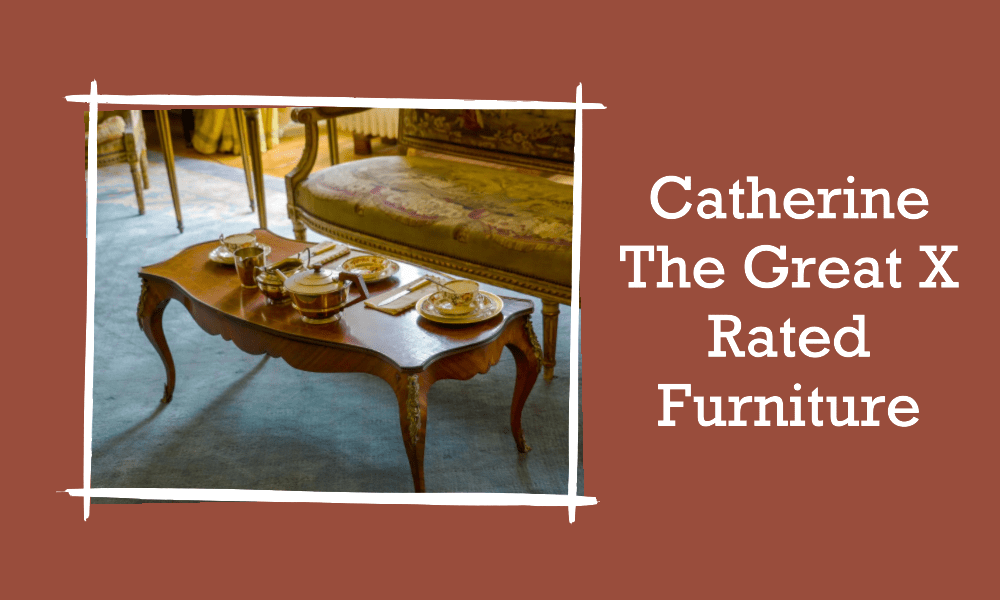
Catherine the Great X Rated Furniture
Table of Contents
ToggleIntroduction
There is perhaps no subject in the realm of furniture history as fascinating, controversial, and downright titillating as the supposed X-rated furniture of Catherine the Great. While Catherine II, Empress of Russia, was known for her political acumen, modernizing reforms, and patronage of the arts, it is the rumors about her private life, particularly her erotic furniture, that have intrigued and baffled people for centuries. This article aims to delve deep into this captivating tale, sifting through fact and fiction to uncover the truths and myths surrounding Catherine the Great’s scandalous furniture.
Table of Contents
- Who Was Catherine the Great?
- The Origin of the Rumors
- The Role of Satire and Political Propaganda
- Archival Evidence and Modern Scholarship
- The Myth in Popular Culture
- FAQs
- Conclusion
Who Was Catherine the Great?
Catherine II, commonly known as Catherine the Great, was Empress of Russia from 1762 until her death in 1796. Born Sophie Friederike Auguste von Anhalt-Zerbst-Dornburg, Catherine took the throne after a coup d’état that she organized against her husband, Peter III. Her reign is known for the expansion of the Russian Empire and substantial contributions to the arts, including the establishment of the Hermitage Museum. Despite these accomplishments, her sexual exploits and rumored penchant for X-rated furniture have often overshadowed her legacy.
The Origin of the Rumors
The rumors about Catherine the Great’s X-rated furniture appear to have originated during her lifetime. While she had many lovers, it was her alleged fondness for erotic art and furniture that sparked wild speculation. It is said that Catherine possessed specially-crafted furniture pieces with explicit engravings and carvings, designed to satisfy her supposed lascivious desires. However, no concrete evidence to substantiate these claims has ever been found.
The Role of Satire and Political Propaganda
The 18th century was rife with political satire and propaganda, especially against powerful women in positions of authority. Female rulers like Catherine were often targets of smear campaigns that aimed to degrade their reputations through allegations of sexual impropriety. The rumors about Catherine’s furniture can be seen as part of this trend, created and propagated to undermine her authority and question her morality.
Archival Evidence and Modern Scholarship
Modern scholars have conducted extensive research on Catherine’s life and reign, but no verifiable evidence of her owning X-rated furniture has been found. While Catherine was a patron of the arts and did commission various artworks and furniture for her palaces, no archival records or personal correspondences confirm the existence of erotic furniture. Thus, most historians consider these rumors to be baseless.
The Myth in Popular Culture
Despite being debunked, the myth of Catherine the Great’s X-rated furniture has persisted in popular culture. From movies and TV series to novels, this tantalizing tale continues to capture the imagination of many. The myth serves as an example of how misinformation, once established, can continue to thrive, even when contradicted by facts.
Frequently Asked Questions
Q. Did Catherine the Great really own X-rated furniture?
There is no credible evidence to suggest that Catherine the Great owned any furniture of an explicit nature.
Q. What is the origin of the rumors surrounding her supposed X-rated furniture?
The rumors seem to have originated as political satire and propaganda aimed at discrediting Catherine the Great and undermining her authority.
Q. How has modern scholarship tackled this topic?
Through exhaustive archival research, modern scholars have found no definitive evidence to substantiate claims about Catherine’s supposed X-rated furniture.
Conclusion
The story of Catherine the Great’s supposed X-rated furniture is a fascinating blend of historical speculation, gender politics, and the enduring power of myth. While there is no concrete evidence to substantiate these claims, the rumors have nonetheless persisted, illustrating how potent political propaganda can be, especially when it targets powerful women. Though debunked by historians, the myth continues to captivate the public’s imagination, cementing its place in the annals of both history and legend.






